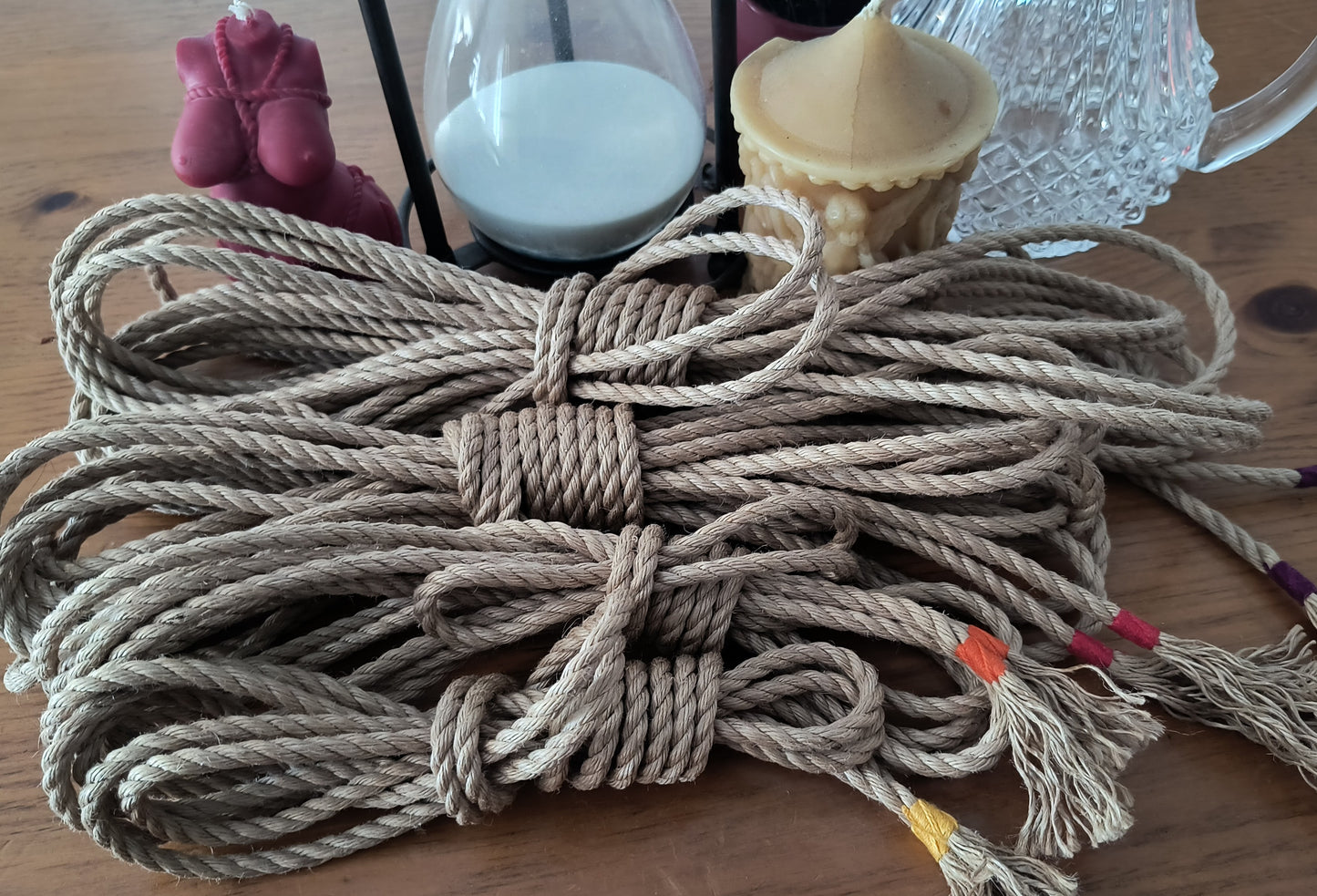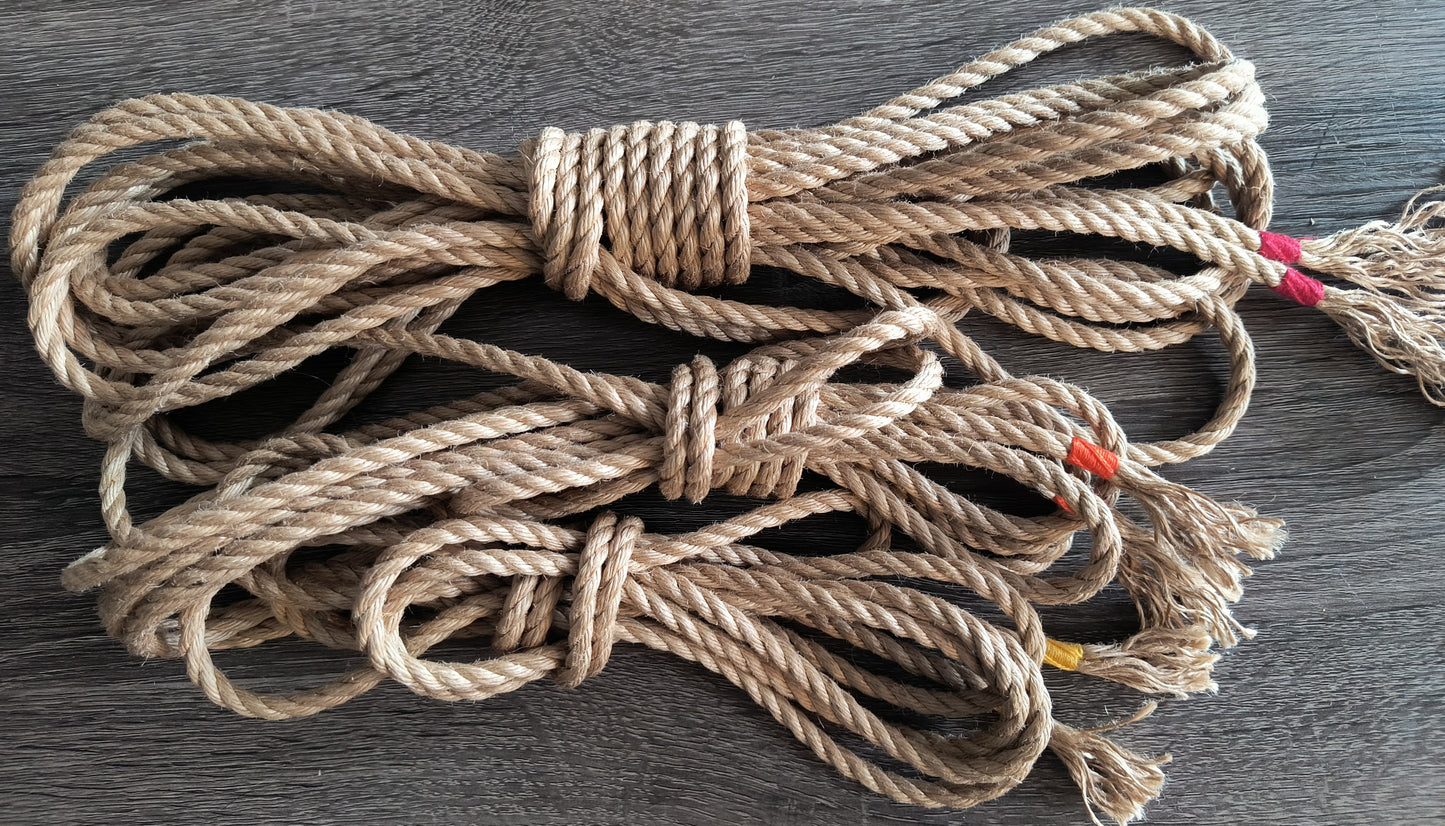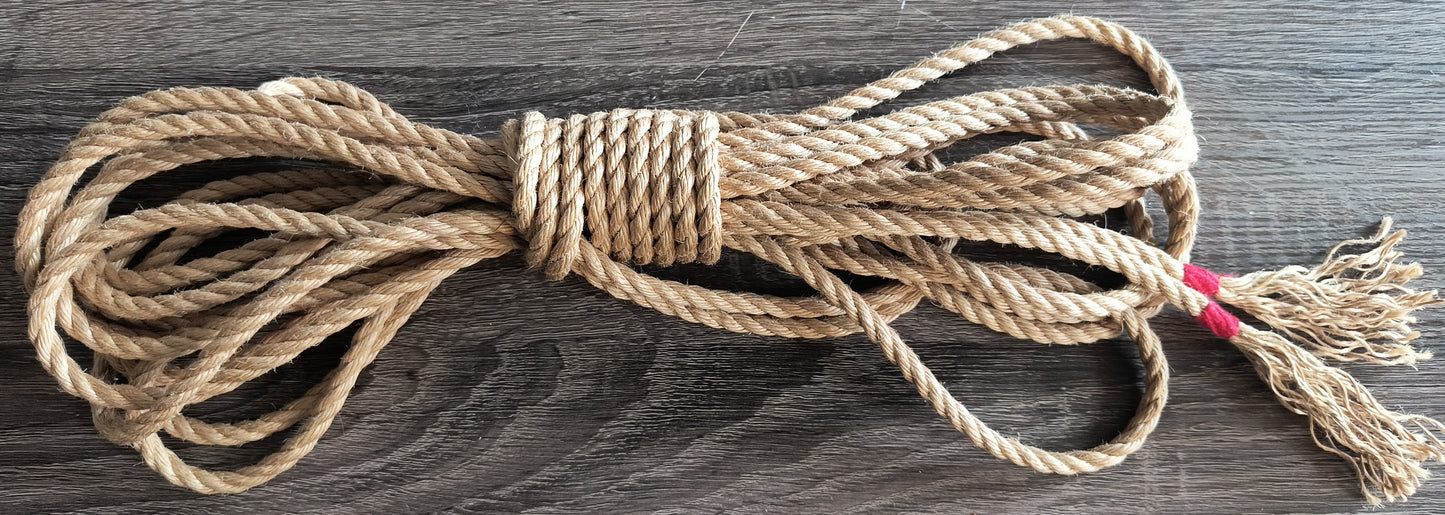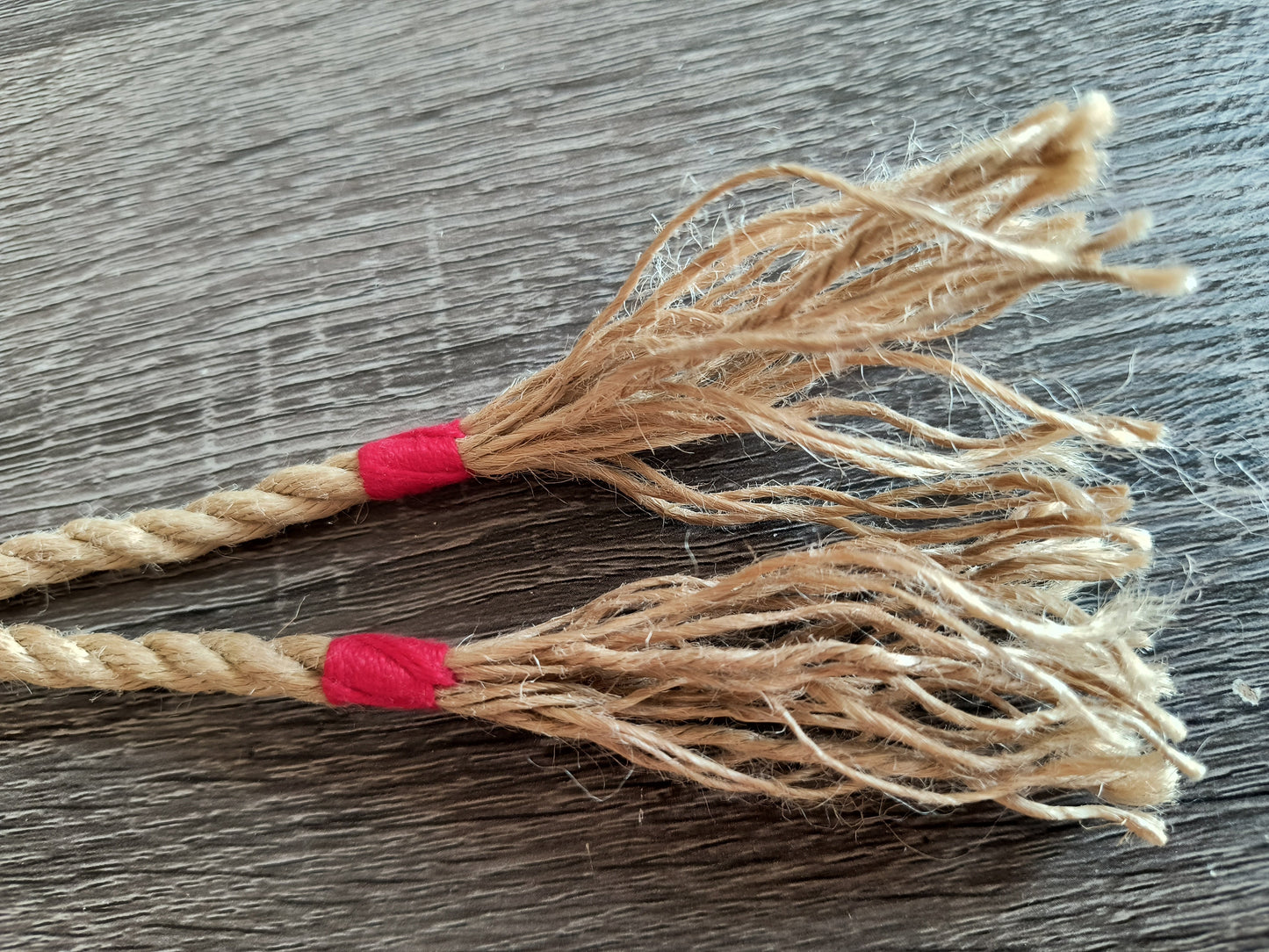
Finishing Touches
Whipped vs. Knotted Rope Ends
In the world of rope bondage, every detail matters. Beyond the length, fiber, and conditioning of your rope, how you finish the ends of your rope influences its look, feel, and performance. The two most common finishing techniques are whipping and knotting. Each carries its own aesthetic, functional considerations, and symbolism.
Whether you’re creating an intentional rope kit or refining your tools for artistic, connective play, understanding the pros and cons of each finish can help align your gear with your values and style.
Whipped Rope Ends: Precision, Elegance & Flow
Whipping involves tightly binding the rope's end with thread, twine, or cord—typically using a technique like the sailmaker’s whipping—to prevent fraying while preserving the rope’s sleek profile.
Benefits of Whipped Ends
Collapsible content
Clean, Professional Aesthetic
Offers a refined, minimalist finish that many associate with advanced rope work.
Fluid Handling
No bulky knots to interrupt motion; ideal for transitions, suspension lines, or
detailed patterns.
Compact and Snag-Free
Easily passes through tight knots and harnesses without catching.
Durability
When done properly, whipping is a long-lasting solution to protect against fray while preserving the rope’s balance and integrity.
Considerations
Collapsible content
Skills and Tools Required
High-quality whipping takes time, skill, materials, and precision.
May Require Maintenance
Improperly applied whipping can loosen with time and use.
Less Tactile Feedback
Some practitioners prefer the tactile stop that a knotted end provides, especially in the dark or under pressure
Knotted Rope Ends: Tradition, Simplicity & Function
Knotted ends involve tying a terminal knot to prevent the rope from fraying. There are a wide variety of knots that can be used to finish rope ends.
Some common ones are the overhand knot, the figure eight, the wall knot, and the Matthew Walker. The most complex and compact end knots also involve some form of splicing the rope ends back into the rest of the rope.
Benefits of Knotted Ends
Collapsible content
Simple and Accessible
No special tools required. Complexity and skill required can be very low depending
on the chosen finisher knot.
Tactile Cues
The knot acts as a physical stop, helpful during fast-paced scenes or when tying in
low-light environments. It also adds a bit of weight to the rope ends which affects how they behave when moving quickly.
Traditional Aesthetic
Offers a classic look favored by those who appreciate historical or minimalist
ropework.
Considerations
Collapsible content
Adds Bulk
Knot can catch on tight wraps or create unwanted pressure points in contact areas.
Less Refined Appearance
Compared to whipping, knots may look less polished or intentional to some.
Visually Uniform
In a kit with multiple knotted ropes, it can be harder to distinguish individual pieces at a glance, especially when compared to custom-colored or contrasting whip finishes
Knot vs. Knot: Triple Wall vs. Overhand
At The Azure Strand, we offer two distinct styles of knotted ends, each with their own aesthetic and functional identity:
Triple Wall Knot
A decorative, dense terminal knot created by unwinding the strands at the ends
and weaving them into each other.
Collapsible content
Refined Aesthetic
A clean, elegant design that elevates the visual presence of your rope.
Sleek Profile
More compact and symmetrical than a bulky overhand, it’s less likely to snag when
pulling the ends through tight knots or ties.
Elegantly Hand-Tied
Each knot is formed with care for a consistent, symmetrical finish that complements the rope’s natural beauty.
Overhand Knot
A simple, single-stopper knot for those who prefer a more traditional, unfussy end.
Collapsible content
Classic and Functional
A straightforward finish with deep roots in rope history.
Easy to Untie & Customize
Ideal for practitioners who wish to remove the knot and finish their ends themselves,
whether through personalized whipping or alternative knots.
Minimalist Choice
A timeless, no-fuss finish preferred by some purists and those who value straightforward, functional rope.
Final Thoughts
Whether you prefer the sleek precision of expertly whipped ends or the traditional simplicity of a knotted finish, how you choose to treat the ends of your rope reflects your values as a practitioner. Whether that is aesthetic refinement, practical function, or ritual intention each method offers unique benefits and carries its own visual and tactile signature.
At The Azure Strand, we honor all approaches as valid expressions of craftsmanship and care. Whatever your path, let the finish be as intentional as the bind.
The Azure Strand
Premium Jute Bondage Rope - Whipped Ends
Share




-
Premium Jute Bondage Rope - Whipped Ends
Regular price From $15.99 CADRegular price -
Premium Jute Bondage Rope - Knotted Ends
Regular price From $12.99 CADRegular price -
Raw Jute Rope
Regular price $1.00 CADRegular price -
Rope Butter
Regular price $16.49 CADRegular price





